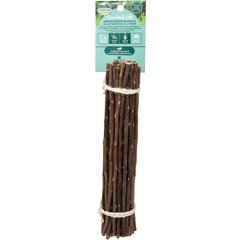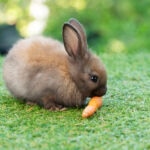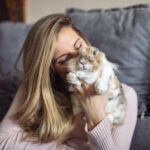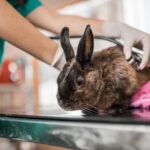The 10 Best Rabbit Breeds for Beginners
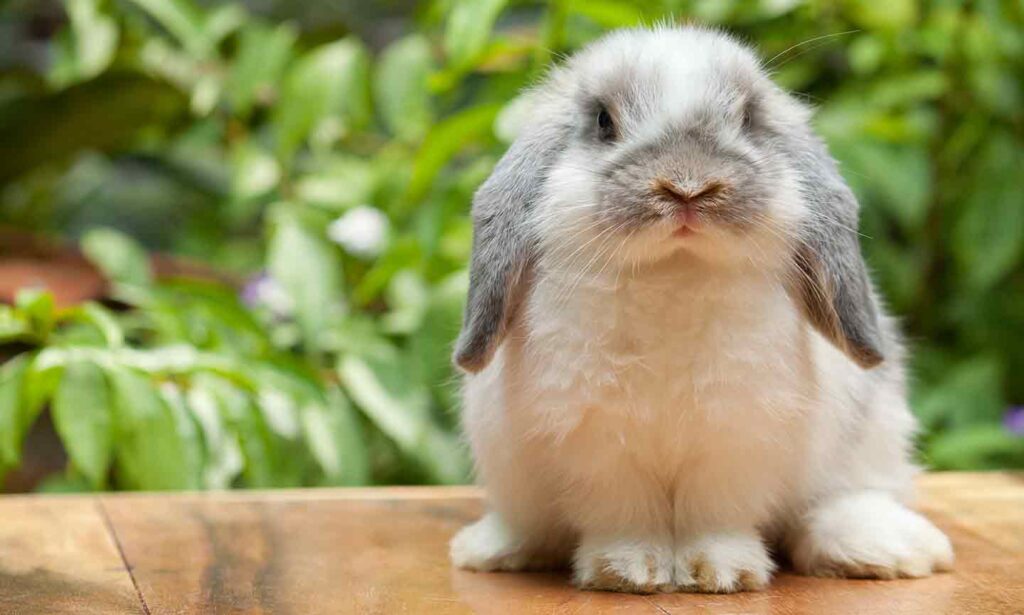
Photo by artemisphoto/iStock / Getty Images Plus
Considering adopting a rabbit? Rabbits are intelligent and affectionate animals with their own unique personalities—and just like with dogs and cats, some breeds are more beginner-friendly than others. Here, we’ll dive (or hop) right in and explain which rabbit breeds are ideal for first-time pet parents and why.
Key Takeaways
- Like with dogs, there are many different rabbit breeds with their own temperaments, characteristics, and care requirements.
- Some rabbit breeds, like the Himalayan or Dutch, are especially recommended for first-time rabbit parents due to their gentle temperaments and low-maintenance needs.
- Smaller breeds like the American Polish and Netherland Dwarf are compact and manageable, though they are energetic.
- Larger breeds like the Flemish Giant are calm and gentle but require more space and grooming.
10 Best Rabbit Breeds for Beginners
We spoke with Christine Toering, a rabbit judge for the American Rabbit Breeders Association (ARBA), in Tucson, Arizona, about the 10 breeds she considers to be the best for beginners.
1. Himalayan
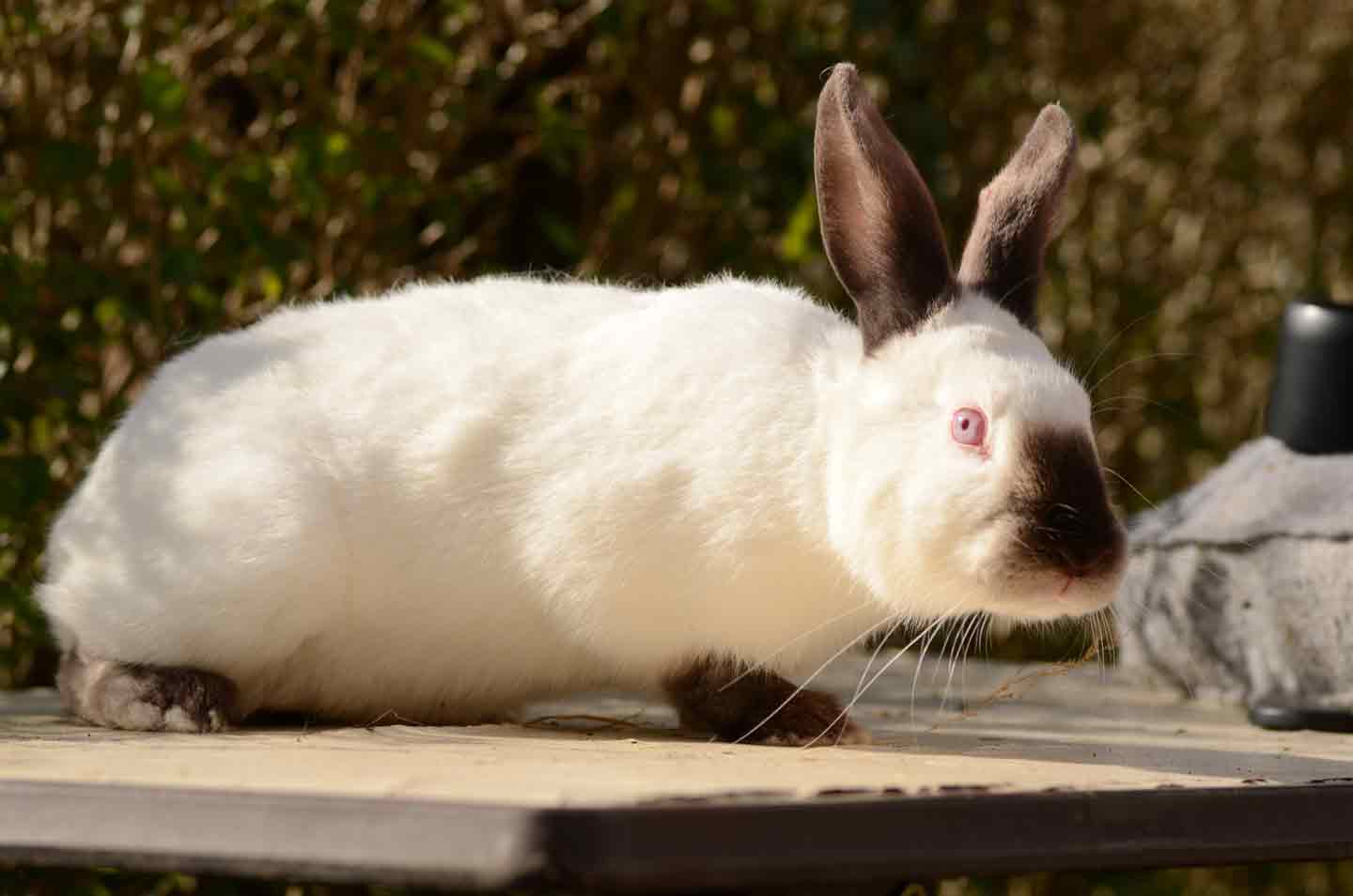
Julia/Adobe Stock
The Himalayan rabbit is an eye-catching breed with a docile, laid-back personality. Toering says they’re a small, slender, and generally healthy breed of rabbit. They typically weigh around 2.5–5 pounds and have a thin, low-maintenance coat. You’ll know a Himalayan rabbit by their pinkish eyes and white coat. They also have black, blue, chocolate, or lilac-colored points on their nose, tail, feet, and ears.
“They are hands down my recommendation for new rabbit owners because of their temperament but are often overlooked by new rabbit owners because of their red eyes,” Toering says.
2. Dutch

Connie Wade/Adobe Stock
If you’re imagining a typical pet rabbit, you’re probably thinking about a Dutch. These rabbits are a classic-looking breed with distinct white markings, Toering says. They’re most commonly seen in black and white, but also come in a variety of other colors combined with white. Toering notes that the Dutch rabbit is friendly and has a low-maintenance coat, making them a good beginner breed.
3. American Polish

Kittisuper/iStock / Getty Images Plus
Not to be confused with the difficult-to-handle Britannia Petite, known as the Polish rabbit in Britain, the American Polish rabbit is a good breed for beginners, Toering says. This is one of the smallest breeds of rabbit, with a maximum weight of 3.5 pounds. Their coat can be black, blue, chocolate, lilac, or “broken pattern” (solid colors spotted with white). And though each rabbit is unique, Toering says that American Polish rabbits usually have a friendly personality.
4. Flemish Giant

krithnarong/iStock / Getty Images Plus
If you’ve ever wanted a big, snuggly bunny, the Flemish Giant is the rabbit for you. This breed’s telltale characteristic is their massive size. They have an official minimum weight of 13 pounds for males and 14 pounds for females but are often considerably larger, Toering says. It isn’t uncommon for some Flemish Giants to reach 20 pounds or more.
Nicknamed the “gentle giant,” this large rabbit is known to be incredibly calm and patient. But there are some caveats for beginners: They require frequent grooming due to their thick, heavy-shedding coat, and also need lot of space given their size.
5. Holland Lop
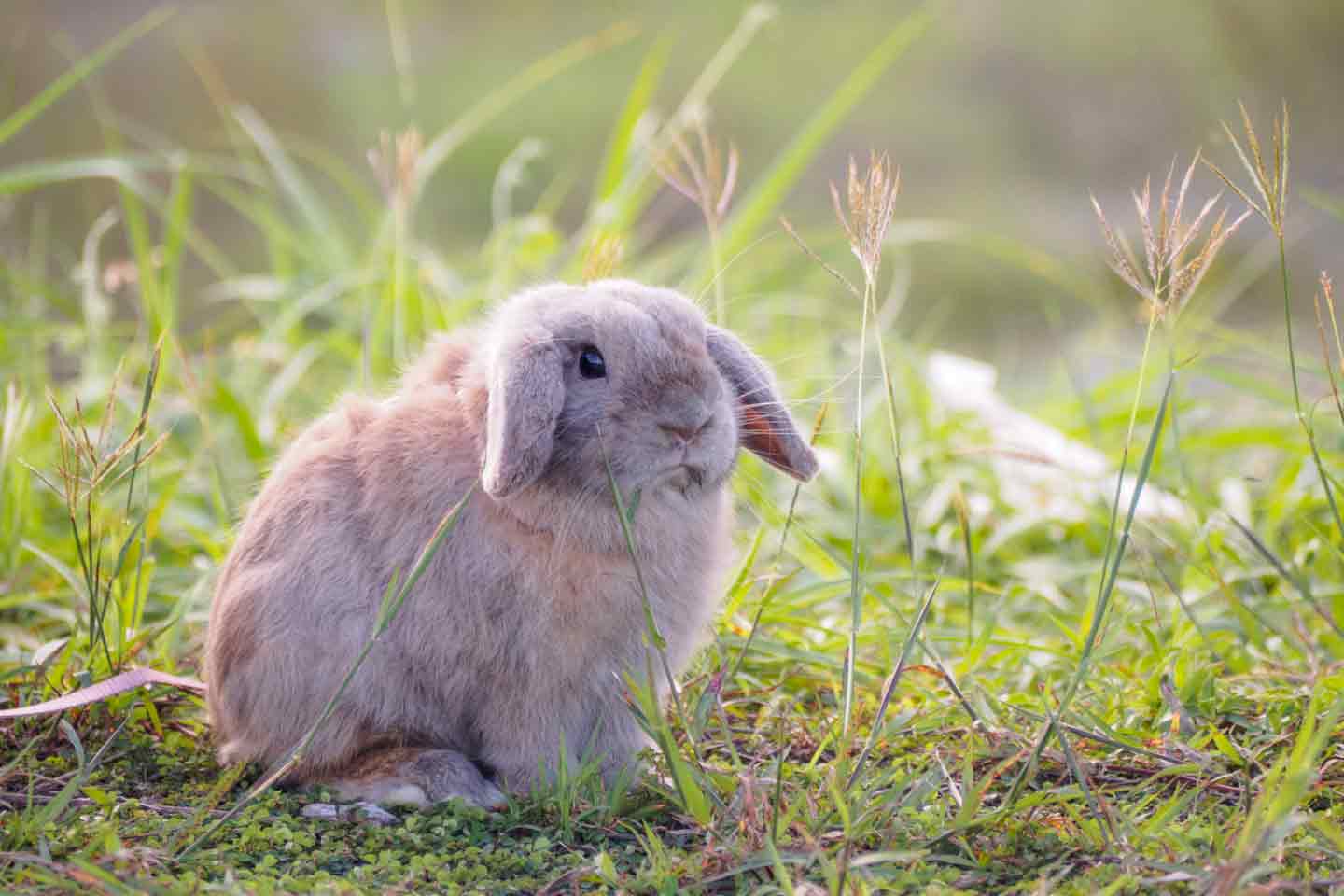
Photo: caption text
The Holland Lop is the smallest lop breed, usually weighing no more than 4 pounds. Holland Lops rank among the top five most popular rabbit breeds and are known for their lopped ears and sweet and spirited personality.
These rabbits have a dense coat and require regular grooming, particularly when they’re molting, to prevent matting, Toering says. It’s essential to find an ethical and responsible rabbit breeder, as some Holland Lops may be prone to malocclusion (misaligned teeth) if poorly bred, which can lead to severe health issues, including difficulty eating and chronic pain.
6. Mini Lop
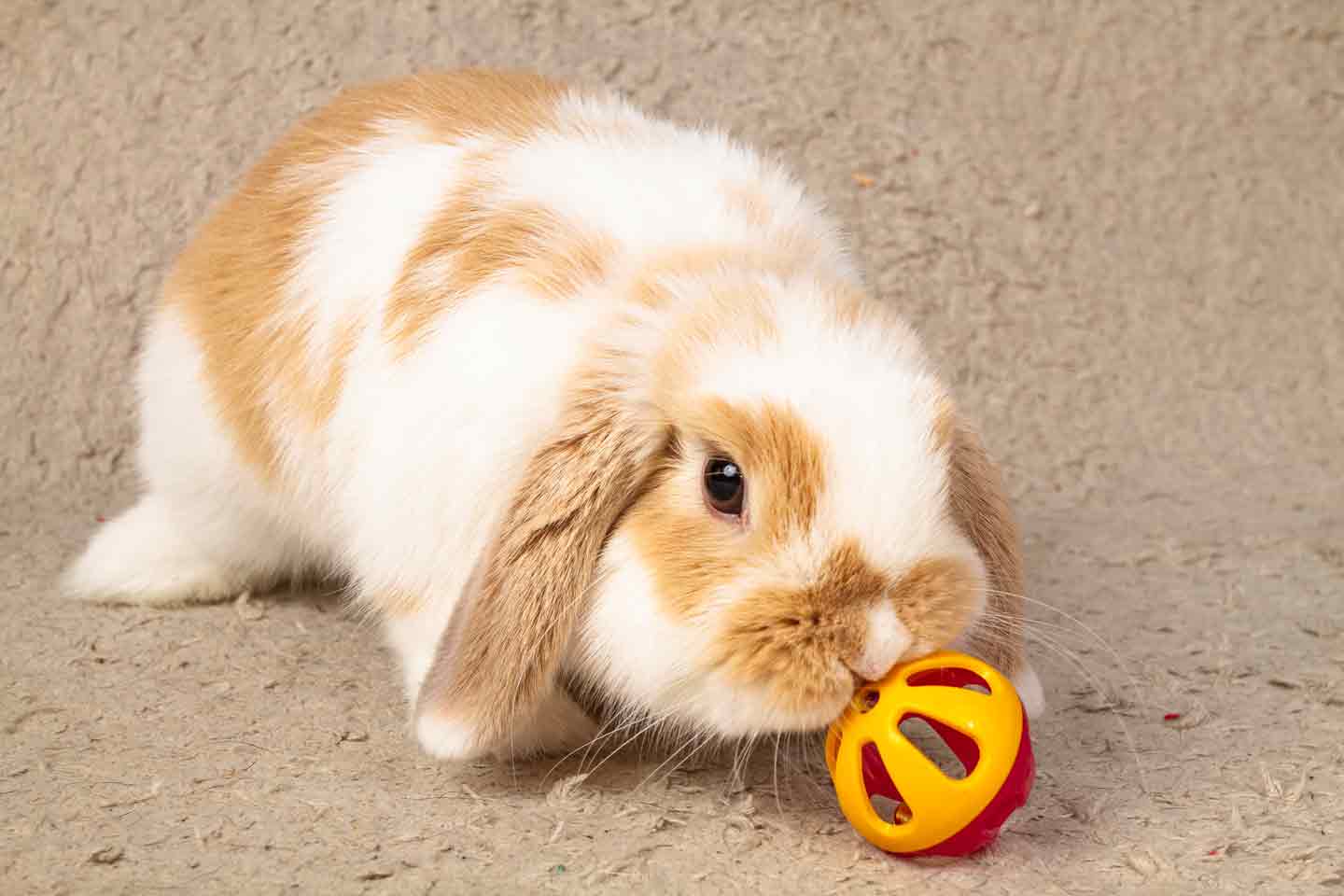
PavelRodimov/iStock / Getty Images Plus
Mini Lops are actually larger than Holland Lops—in fact, they’re one of the largest breeds on this list, weighing around 4–6 pounds. Mini Lops have a thicker coat, similar to Holland Lops, and have a softball-sized head. They should also be groomed frequently to prevent matting. Compared to Holland Lops, Toering describes them as being more laid-back and independent in their personality.
7. Havana
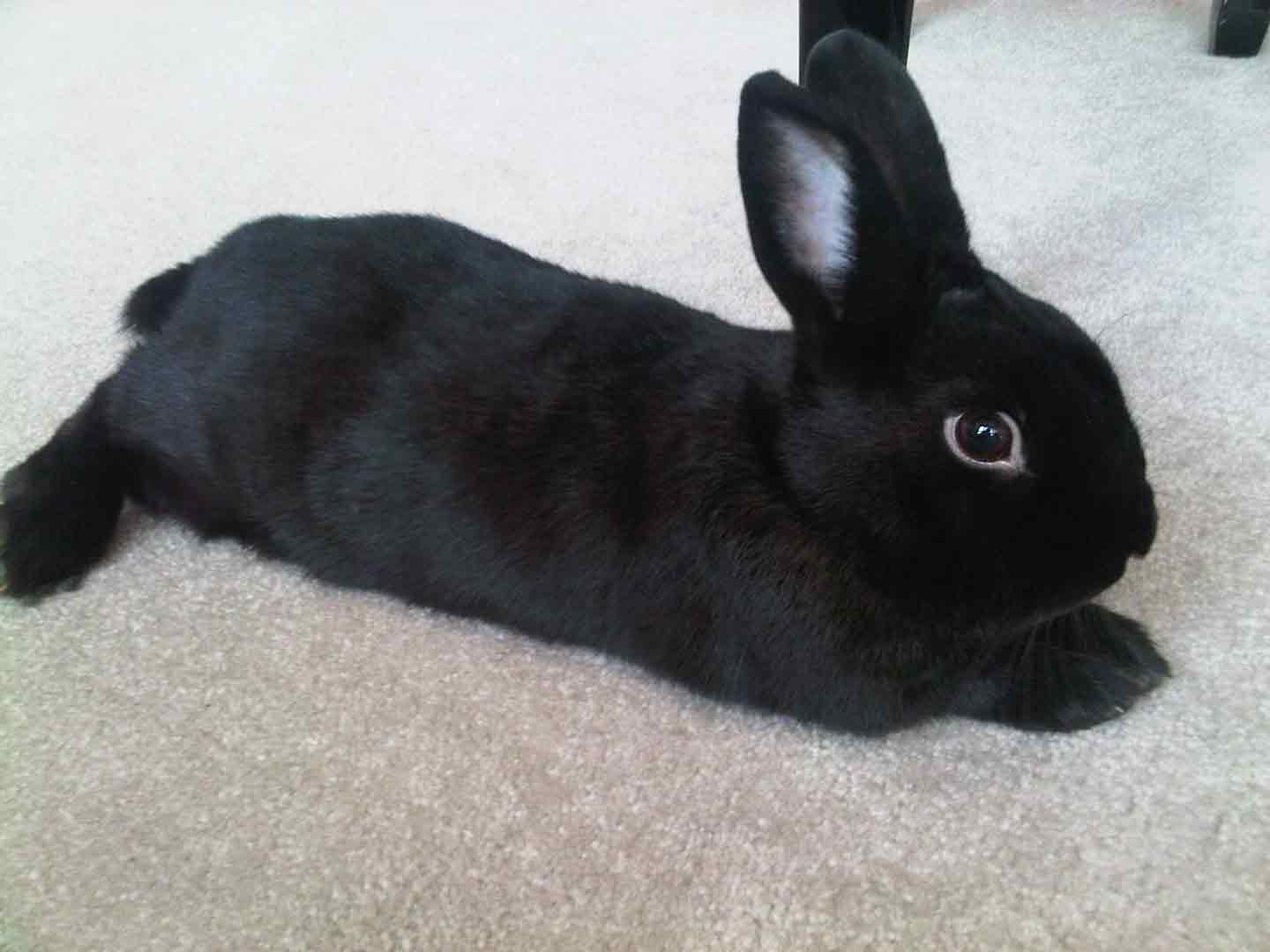
Mjm91, CC BY-SA 3.0, via Wikimedia Commons
The Havana, also known as the “Mink of the Fancy,” has a stunning, lustrous coat and weighs 4.5–6.5 pounds. They’re often seen in solid colors like black, blue, chocolate, and lilac, or in broken pattern.
Toering notes that the personalities of Havanas can vary. In her experience, she’s found that the males tend to be fairly calm, but the females can be a little flighty—not aggressive, she says, but not as curious and outgoing as some other breeds on this list. Still, she recommends Havanas for beginners because they’re generally healthy and have a low-maintenance coat.
8. Netherland Dwarf
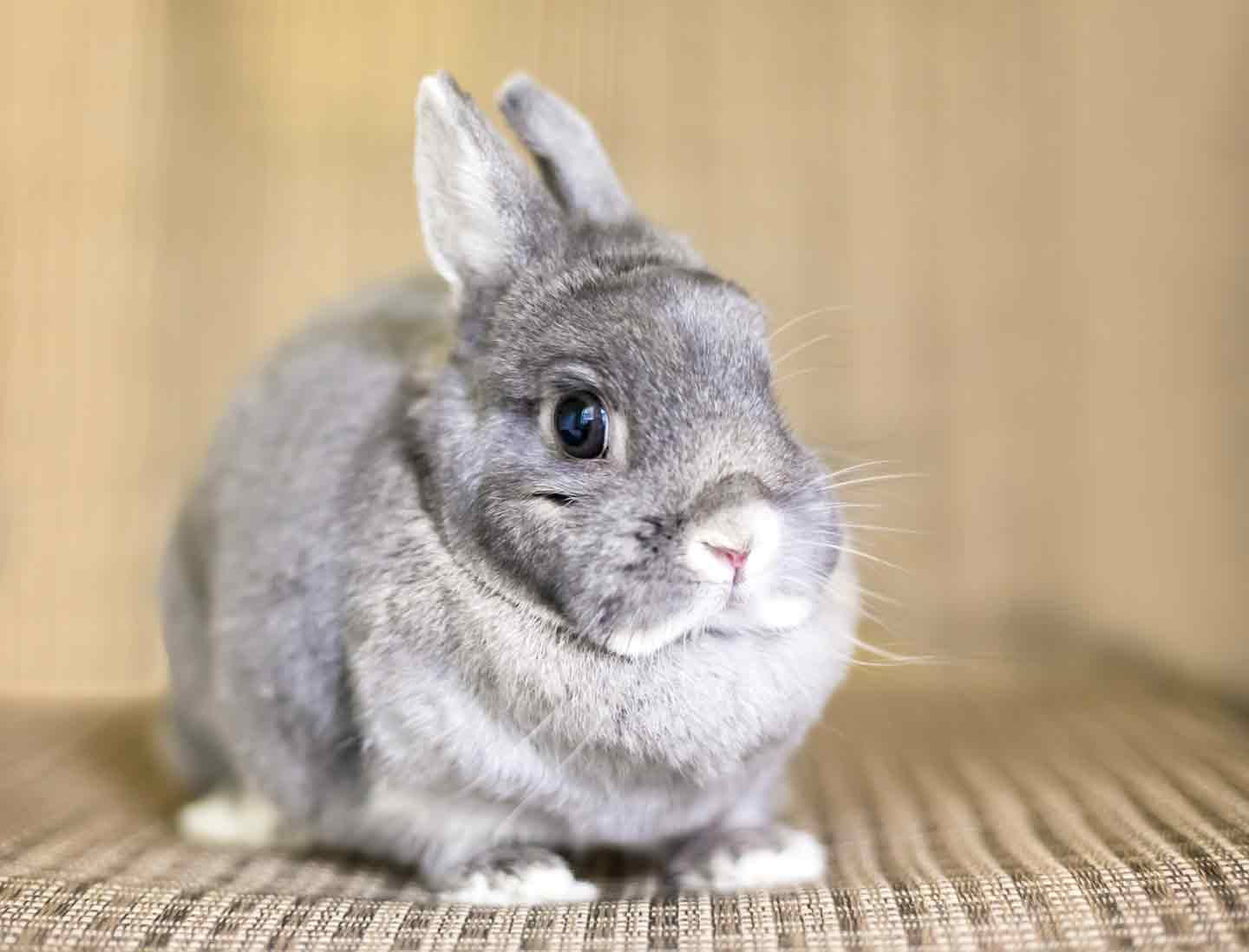
Mary Swift/iStock / Getty Images Plus
The Netherland Dwarf is one of the smallest breeds of rabbit, weighing in at a whopping 2 pounds! Even with their tiny size, they’re as high-powered as the Energizer Bunny.
“Netherland Dwarfs tend to be pretty energetic little rabbits,” Toering says. “This can either end up with them being curious and energetic (more common in the males), or they can end up flighty (more common in the females).”
Netherland Dwarfs have a distinct round head with short ears, which Toering explains is caused by the dwarfism gene that’s found in several other small rabbit breeds, like the Mini Rex, Jersey Wooly, and many Holland Lops.
The Netherland Dwarf rabbit can appear in 25 color varieties, both solid and broken. Their medium, thick fur needs deshedding when they’re molting but is generally low-maintenance the rest of the year, Toering notes. Like Holland Lops, Netherland Dwarfs who are poorly bred can be more susceptible to malocclusion.
9. Mini Rex

Marine2844/iStock / Getty Images Plus
The Mini Rex weighs around 4 pounds and is beloved for their friendly demeanor. Mini Rex rabbits are easily recognized for their unique fur, as they have short guard hairs that give them a very short, plush, and low-maintenance coat, Toering says.
However, because these guard hairs are shorter and weaker compared to those of other rabbits, this doesn’t provide the bottoms of their feet with adequate protection and can make them prone to sore hocks.
10. Jersey Wooly
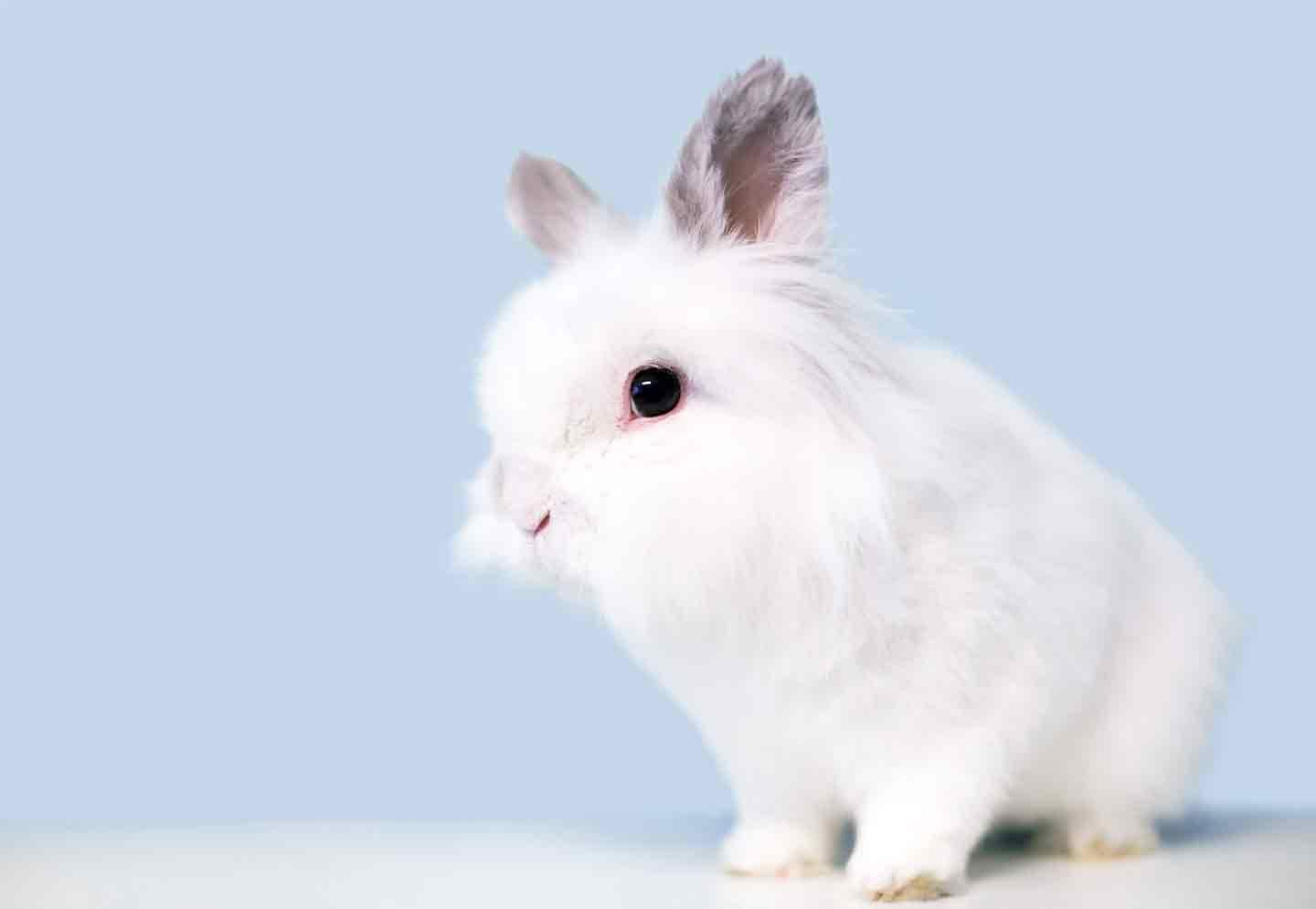
Mary Swift/iStock / Getty Images Plus
Another popular breed, the long-haired Jersey Wooly has a gentle, easygoing personality and a relatively easy-to-care-for coat compared to other long-haired breeds, Toering says. Their body structure is similar to the Netherland Dwarf, with the exception that they’re just a bit bigger, weighing about 3 pounds. And just look at that gorgeous coat!
Toering notes that because of this wool, Jersey Wooly rabbits tend to need more protein in their diet. Adult Jersey Wooly rabbits can eat a diet intended for young or growing rabbits to help them maintain the energy needed for wool growth, she adds.
Other Popular Rabbit Breeds
Interested in learning more about the other 42 ARBA-recognized rabbit breeds? Here’s a quick overview of the different ever-so-fluffy and fascinating types of domestic rabbits:
| Breed | Size (Max weight) | Fur Type | Color | Ear Type |
|---|---|---|---|---|
| American | 12 pounds | Short | Blue, white | Erect |
| American Chinchilla | 12 pounds | Short | Dark slate blue, dark blue, light gray | Erect |
| American Fuzzy Lop | 4 pounds | Long | Various (e.g., chestnut, chinchilla, lynx, opal, lilac, fawn, orange, etc.) | Lop |
| American Sable | 9 pounds | Short | Brown/sepia | Erect |
| Argente Brun | 10.5 pounds | Medium | Silvered or frosted chocolate brown | Erect |
| Belgian Hare | 9.5 pounds | Short | Rufus, tan, black, blue, chocolate, lilac | Erect |
| Beveren | 12 pounds | Long | Black, white, blue | Erect |
| Blanc de Hotot | 11 pounds | Short | White | Erect |
| Blue Holicer | 7.25 pounds | Medium | Blue | Erect |
| Britannia Petite | 2.5 pounds | Short | Various (e.g., black, black otter, chestnut agouti, ruby-eyed white, sable marten, etc.) | Erect |
| Californian | 10.5 pounds | Short | White with dark points | Erect |
| Champagne d’Argent | 12 pounds | Short | Black (when young), silver (when mature) | Erect |
| Checkered Giant | 12 pounds and up (no maximum weight) | Short | White with black or blue markings | Erect |
| Cinnamon | 11 pounds | Short | Rust with smoky gray shading | Erect |
| Creme d’Argent | 11 pounds | Short | Cream with orange | Erect |
| Czech Frosty | 8.25 pounds | Short | Frosty | Erect |
| Dwarf Hotot | 3 pounds | Short | White with black, blue, chocolate, or lilac eye bands | Erect |
| Dwarf Papillon | 4.25 pounds | Short | Black, blue, chocolate | Erect |
| English Angora | 7.5 pounds | Long | Various (black, blue, chocolate, lilac, etc.) | Erect |
| English Lop | 11 pounds and up (no maximum weight) | Short | Various (e.g., sable, fawn, orange, cream, ruby-eyed white, black, blue, etc.) | Lop |
| English Spot | 8 pounds | Short | White with black, blue, chocolate, gold, gray, lilac, or tortoise markings | Erect |
| Florida White | 6 pounds | Short | White | Erect |
| French Angora | 10.5 pounds | Long | Various (e.g., black, blue, lilac, etc.) | Erect |
| French Lop | 15 pounds and up (no maximum weight) | Medium | Various (e.g., sable, fawn, orange, cream, ruby-eyed white, black, blue, etc.) | Lop |
| Giant Angora | 12 pounds and up (no maximum weight) | Long | Ruby-eyed white, chestnut | Erect |
| Giant Chinchilla | 16 pounds | Short | Gray and silver gray | Erect |
| Harlequin | 9.5 pounds | Short | Orange, fawn, or white with black, blue, chocolate, or lilac | Erect |
| Lilac | 8 pounds | Short | Pinkish dove-gray | Erect |
| Lionhead | 3.75 pounds | Long | Various (e.g., black, ruby-eyed white, chocolate, tortoise, etc.) | Erect |
| Mini Satin | 5 pounds | Short | Various (e.g., black, blue, chocolate, red, white, etc.) | Erect |
| New Zealand | 12 pounds | Short | Black, blue, red, white, broken | Erect |
| Palomino | 11 pounds | Short | Golden, lynx | Erect |
| Rex | 10.5 pounds | Short | Various (e.g., black, chocolate, white, red, etc.) | Erect |
| Rhinelander | 10 pounds | Short | White with orange and black, or fawn and blue spots | Erect |
| Satin | 11 pounds | Short | Various (e.g., black, blue, chocolate, red, white, etc.) | Erect |
| Satin Angora | 9.5 pounds | Long | Various (e.g., black, blue, chestnut, sable, cream, fawn, ruby-eyed white, etc.) | Erect |
| Silver | 7 pounds | Short | Black, brown, fawn | Erect |
| Silver Fox | 12 pounds | Short | Black, chocolate, blue | Erect |
| Silver Martin | 9.5 pounds | Short | Black, blue, chocolate, lilac, sable | Erect |
| Standard Chinchilla | 7.5 pounds | Short | Dark slate blue under color, with a dark blue/light gray top edge | Erect |
| Tan | 5.5 pounds | Short | Black, blue, chocolate, lilac | Erect |
| Thrianta | 6 pounds | Short | Orange-red | Erect |
Caring for Rabbits
While some species require more care in certain aspects than others, all rabbits require the same general care. Walter Merker, DVM, veterinarian at Orange Grove Animal Hospital in Tucson, Arizona, shares these tips on how to best care for your rabbit:
- Feed your adult rabbit a nutritious, balanced diet. Rabbits’ daily feeding should consist of 70% high-quality grass hay, 20% high-quality pellets fortified with vitamins and minerals, and 10% organic, leafy green vegetables. Vegetables and fruits that are high in carbohydrates should be fed only in moderation, while pelleted diets with dried fruits and vegetables should be avoided altogether to prevent health issues linked to an overly rich diet.
- Keep your rabbit physically active and mentally stimulated. Rabbits need about four hours of supervised play daily. Keep them entertained with rabbit-safe toys and treats, such as woven hay or hay huts, tunnels, and chews.
- Provide them with spacious housing and the essentials. Their enclosure should be large and with a solid bottom. Place two water sources (a ceramic bowl and a water bottle), a clean litter box with dust-free litter, unlimited access to hay, a ceramic food dish, and multiple rabbit-safe chew toys.
- Schedule regular vet appointments. A qualified small-mammal vet can conduct annual exams to help identify potential dental issues, internal and external parasites, obesity, and any other health issues. Rabbits above the age of 5 or those with known dental disease should be seen every six months.
Recommended Products

